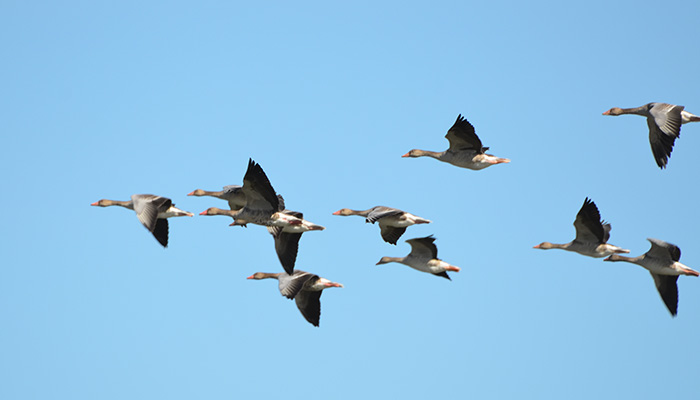
English: Greylag Goose, Grey Goose, Eastern Greylag Goose
Russian: Серый гусь
German: Graugans
French: Oie
cendree
Mongolian: Бор галуу
Japanese: ハイイロガン(Haiiro-gan)
Body
length: 74-84 cm
Wing
span: 149-168 cm
Passage migrant
Breeding season: May-August
Egg number: 4-6 (occasionally 3-8)
Egg color: Creamy-white with slight fine
granular texture
Brood: 1 per year
Global status: Least Concern
Regional status: Least Concern
Habitat: Breeds in variety of habitats mainly wetlands, from
shallow lakes with reedbeds and freshwater marshes to islets in larger lakes,
coasts (even brackish water), heather, rocky slopes, etc. British
breeders mainly resident, most others migratory. Increasing in numbers. Only
grey goose to be seen in large numbers in summer in Europe.
Identification: Large
equaled in size only by largest Taiga Bean Goose, but bulkier, with ticker
neck, larger head and heavier bill, latter being all pinkish-orange or pink.
Legs dull pinkish. Wings broad, flight heavy. Plumage rather plain brown-grey
without strong contrasts, head and neck typically rather pale. A few have
insignificant thin white rim at base of bill, and many have some dark marks on
belly. In flight, upper forewing strikingly pale ash-grey, contrasting sharply
with darker rear parts of wing and with darker back. Underwing characteristic,
too, otherwise dark wing having pale grey leading edge distinctly set off, thus
two-coloured, unique among European geese. Greylags flying away from observer
can be recognized by size and pale grey rump, contrasting with dark brown
tertials and back.
Variation:
Western birds comparatively darker, smaller and with more orange tinge to bill;
eastern paler, larger and have pinkish bill; E European breeders appear to be
intermediates.
Food: Grain, root crops and leafy vegetation.